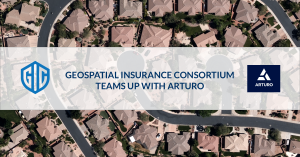
In August 2021, Transerve, a Goa-based Location Intelligence (LI) and data company that is in the business of spatial data handling, processing, and analysis, took up a project on behalf of a multinational real-estate and asset management company. The project was to identify the target market segment for the development and marketing of a premium residential project based in Delhi NCR.
As a rule of thumb, any residential real-estate that is valued in the top 10 percent of the local property market is considered as premium or super-premium realty.
The real-estate company (name withheld for reasons of confidentiality) was interested in identifying a niche target market comprising High Net-worth Individuals (HNI), who could buy residential units at a starting price of ₹34 million (approximately $460,000). The company wanted to optimize its Out-of-Home (OOH) strategy and streamline its digital marketing strategy based on Mobile Advertising IDs (MAIDs)—Android Advertising ID (AAID) and Identifier for Advertisers (IFDA). In order to achieve the marketing objectives defined by the real-estate company, Transerve needed to identify localities or grids of high affluence.
Further, the real-estate company had sold just 300 units of various types in its product portfolio in the first phase over two years. Out of these, direct sales accounted for a mere 10 percent, while the remaining 90 percent were sold though channel partners, local agents, and brokers. This meant the commission paid to them impacted the bottom line of the real-estate company.
The biggest challenge that Transerve faced when it took up the project was that besides location data, the rest of the data provided by the real-estate company had limited attributes and offered very little insight. The company was also not well-versed with geospatial technologies. The lack of awareness about technology meant that the employees of the real-estate company did not ask their customers the right questions in the first phase, which meant very limited qualitative insight was available for Transerve to work upon.
As a first step, Transerve established a workflow that enabled Big Data processing, like human mobility data and various geospatial datasets, in order to compute the Net Affluence Rating for the grids.
The resolution of the grids was city specific, based on the typical urban fabric of a city such as streetscapes, hard and soft buildings, road conditions, street lighting, signages, etc. For a city like Gurugram, a grid resolution of 350 meters was adequate, while for a more densely constructed city like Mumbai, a higher resolution of 150 meters was needed. After determining the grid resolutions, it was followed by spatial statistical modeling for individual grids for identifying key variables and assigning weightage to features for calculating the final rating of the grids. These key variables included building index, road index, mobile index, and Point of Interest (POI) index, among other datasets.
The next step was a deep dive into the high affluence-rated grids for a granular analysis of the localities, and the individuals and their devices (mobile phones) who resided in these affluent areas. Further, algorithms were executed to analyze mobility patterns by running Origin Destination Time (ODT) analysis, dwell-time analysis along with POIs (Point of Interest), convergence grids, and footfall analysis.
The results and outcomes of the analyses, when correlated with the observed patterns of the first phase, helped Transerve to glean insights that enabled it to narrow down the target customers — HNIs who shared the same mobility patterns as the existing customers of the first phase.
In order to optimize the OOH strategy and drive the digital marketing campaigns, Origin and Destination (O/D) analysis outputs were overlaid on top of the existing road networks to further refine the analysis and identify hotspots with high footfall of these individuals or devices.
Transerve offered its state-of-the-art DIY geospatial analytics platform — Transerve Online Stack (TOS) on a monthly subscription basis to the client. It ran Artificial Intelligence (AI) and Machine Language (ML) algorithms on spatial datasets to identify HNIs inside the high affluence-rated grids. They did this by developing algorithms for processing and analyzing MAID-based human mobility data. Further, image processing algorithms were applied to the key variables for classification of land use at the city, zonal and local levels to mask out the non-residential grids (areas). Then, statistical modeling was done to differentiate the grids from one another.
Transerve helped the real-estate company reduce its marketing budget by 25 percent, increase Return on Investment (RoI) up to 40 times the original figure, and achieve 35 percent faster sales. This case study demonstrates the deep impact that Location Intelligence and the deployment of the right geospatial tools and technology can have on business outcomes in the real world. Easy access to high-quality geospatial data is the key.
To this effect, liberalization of the Indian geospatial policy and a majority of associated services has brought private players to the front in the country. According to Transerve, the Indian Location Intelligence (LI) market should grow to around $670 million (approximately ₹50.5 billion) by 2023, with major application areas being Banking, Financial Services and Insurance (BFSI), real estate, Fast-Moving Consumer Goods (FMCG), pharmaceuticals, transport and logistics, etc. Even COVID-19 acted as a catalyst in increasing the adoption of technology that resulted in a spike in Transerve’s revenue. Although geospatial policies have been liberalized in India, they still haven’t been implemented; nevertheless the move has already impacted businesses in a positive manner.


C. L. HoganMapInfo Australia Pty Ltd, Sydney, Australia Tele: 61-2-9437 6255, Fax: 61-2-9439-1773,[email protected] AbstractIn recent years GIS and desktop mapping systems have evolved from the domain of the specialist to
China’s industry regulator will not shut down online mapping services provided by Google Inc and Microsoft Corp, according to the State Bureau of Surveying and Mapping (SBSM), China. This is the first time, the regulator …
© Geospatial Media and Communications. All Rights Reserved.